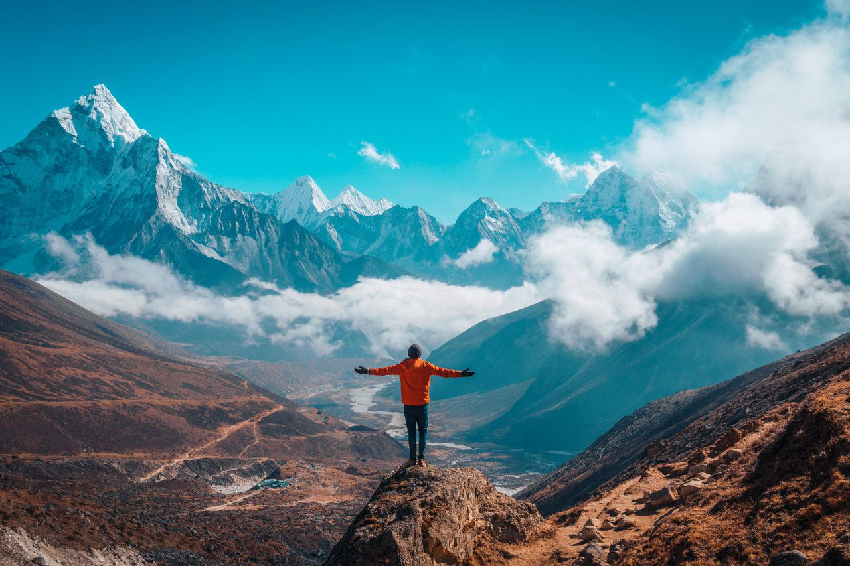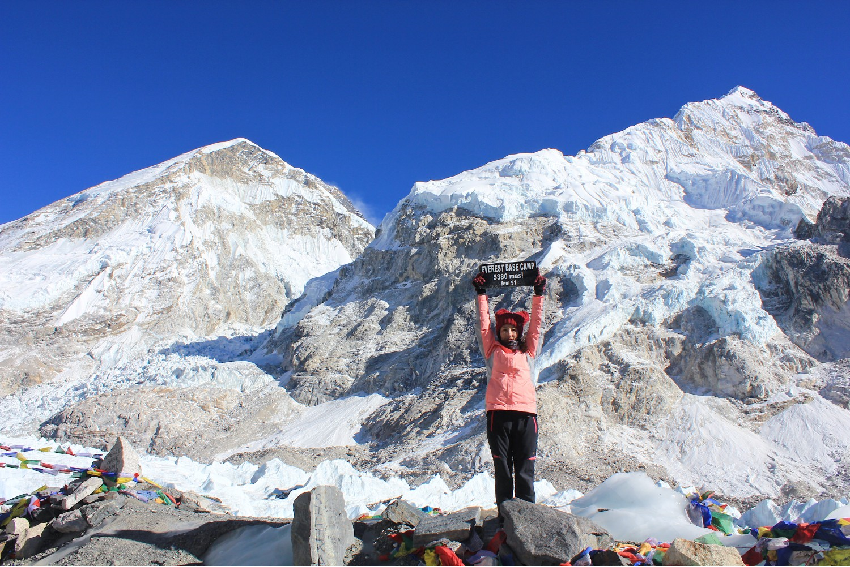
12 Jun Tips for trekking to Everest base camp
Let yourself be carried away by the fresh breeze from the Himalayas, the sound of the voices of the monks in the Buddhist temples, the spectacular views of several of the highest mountains in the world, and a dream: Everest. If you get goosebumps it is because you know that soon you will feel the same as we do when you travel the centuries-old paths that take you to the foot of the highest mountain in the world surrounded by Sherpa villages, rivers, and amazing peaks. In this post, we give you several tips to make your expedition to Everest Base Camp a success.
We are going to give you two types of advice: basic and advanced. The basic ones are the ones you will read in almost all travel guides and the advanced ones are the ones we have acquired thanks to our first-hand experience. Let’s start!
Basic tips
In the first place, the general tips for traveling to Nepal, such as the issue of visa, currency, vaccinations… you can find them in this other entry. We wanted to dedicate this one exclusively to specific trekking tips.
Time To Travel

To trek to the Everest Base Camp, it is best to go from April to May or from September to November. In summer it is not recommended because the monsoon makes the ascent almost impossible and in winter it is not directly allowed due to inclement weather. So plan your trip around those time frames.
Climate
In those two windows of good weather, the weather is quite variable. On the same day, you can have sun, wind, rain… Obviously, the higher up, the colder. However, it is not the intense cold that we expected. Yes, it is cold but perfectly bearable with the clothes that we will detail later. The recommended thing for each stage of trekking to be with more or less decent weather is to start walking around 6:30 in the morning and arrive at the destination before 15:30. Although the weather is variable, it follows a more or less strict scheme, which is good weather very early in the morning, cloudy mid-morning, and rain from 4:00 pm.
Clothing
As I said, the weather is changeable, so you have to take a little of everything, bearing in mind that it should be as comfortable as you have and that it should not weigh too much. I’ll tell you what we had:
- Mountain shoes with Gore-Tex. It is essential that you have already walked a lot with them to make sure that they do not hurt you.
- A comfortable sneaker type shoe to be around towns and hostels
- Some fine long tights
- Long thermal tights
- Some thin shorts
- A pair of breathable short-sleeved shirts
- A pair of thermal long-sleeved shirts
- A pair of fleeces
- A raincoat (good)
- A chubby but light anorak
- A pair of normal t-shirts to sleep in
With A Guide Or Alone?
It can be done without a guide or sherpas or anything, but we did it with a guide because we had no experience in high mountains and because I have a respiratory problem (nothing serious, don’t worry). So to go calm we decided to go with an agency. We look at many and talk to many. Almost all of them offer the same thing but the prices can vary a little.
Gastronomy
The gastronomic offer is limited, but there is plenty. For breakfast, there are many things to choose from: many types of sandwiches, toast, eggs, tea, coffee… Breakfast is VERY good. Lunch and dinner are almost always the same: rice (with vegetables, and meat…), assorted omelets (forget the potato omelet), noodles with vegetables or meat, soups, and momos (stuffed rice pasta dumplings).
In some places, they also have pizzas, quite delicious, by the way. In the end, the letter of all sites is almost the same. If you go with an agency, you have breakfast, lunch, and dinner included in the price. You can choose what you want from the menu, it is not a set menu. Of course, the drink is not included. If you go along, keep in mind that you must order breakfast the night before.
Travel Insurance
To do the trekking you must be insured with a policy that covers you up to the maximum height you are going to reach. We travel insured with Iati, with its Backpacker policy, which covers you up to more than 5000 meters. If you contact your insurance with them through this link you will get a 5% discount.
Permits
To do the trek, whether you go with a guide or on your own, you will need to obtain two permits, the ACAP to enter protected areas and the TIMS, which is the permit for the trek itself. If you go with a guide or agency, they will process these permits. If you go on your own, you will have to process them yourself. You can do it upon your arrival in Kathmandu. You must present a copy of your passport and passport-size photos at the office. They will also ask you for your insurance policy number which, as I said, is mandatory.
You may like to read Essential tips for traveling to Iceland


No Comments